Fishing a jig for Bass is one of the most common and versatile ways to catch fish. Jigging for bass is a technique that requires a skirted jig and a plastic grub or craw imitation trailer worked along the bottom or reeled through the middle of the water column. Bass jigging works all around the country in big and small bodies of water. A jig can mimic numerous bait profiles like crawfish, gobies, perch and panfish. Jigs are most commonly used on Baitcasting equipment with heavier line that excels in dense cover. Understanding how to fish a jig for Bass is a fundamental technique for learning how to Bass fish in general.
Jigging for Bass Tactics
When fishing a jig through cover, a baitcasting combo allows you to fish fast, cast accurately, and rip through heavy cover. Look for a medium heavy rod with a fast ratio reel in the 6:1 to 7:1 range. A fast ratio reel is preferred for dragging and swimming your jig as it allows you to reel in a lot of line with less cranks of the handle. The heavier power of the rod aides in landing fish that inevitably get hung up in thick cover. We recommend spooling with 10-15 Lb braided line for baitcasters to manage weed build up and snags.
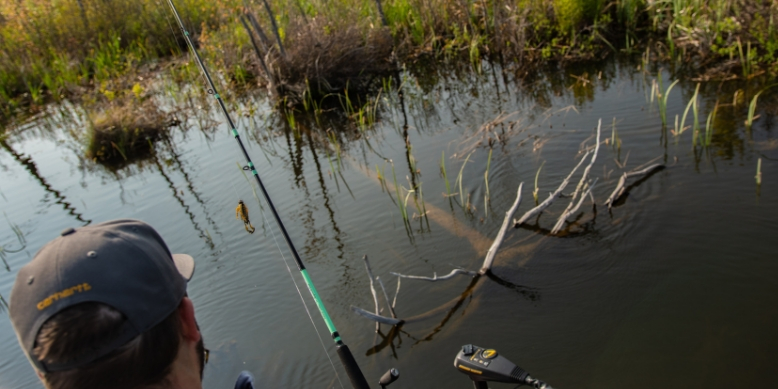
Ben Cayer punching through dense cover with our Bass Baitcasting Combo
Pitching a Jig
Pitch a jig to underhand your cast into targets with overhanging cover. Pitching is a fast and accurate way to get underneath nearby features like docks and branches. Pitch a jig to accurately get under these shady spots from roughly 10-20 ft away.
Pitch a Jig Step-by-Step
1. Press your thumb down on the spool and release button like a typical cast.
2. Pinch your bait or the line just above your bait with your opposite hand.
3. Load up your rod by pulling the bait back.
4. Aim at your target with the tip of your rod.
5. Release the bait and your thumb on the spool at the same time to “Pitch the Jig”
6. Feather the spool to allow the line to flow smoothly without back lashing.
7. Use the rod tip to control the speed of the bait to gently hit the water.
9. As the bait hits the water, add pressure to the spool to avoid a backlash.
10. Click the reel forward and begin your retrieve back towards the boat

Pitching is a fast and accurate way to get underneath nearby cover
Jig Flipping
Flipping is a stealthy approach to fishing in shallow water where fish can be spooky. Unlike pitching a jig, the target for flipping is usually within a couple rod lengths of the angler. Flip your jig to accurately hit an exact target when Bass are holding on a tough to reach spot. Spots for flipping are typically between boat lifts, pylons, or submerged trees.
Flip a Jig Step-By-Step
1. Release your line by pulling out between your reel and the first rod guide
2. Release enough line to reach the distance between yourself and the target.
3. Set this line to the side on the floor (not in the water)
4. Press your thumb down on the spool and release button like a typical cast.
5. Pinch the line between the reel and the first guide with your opposite hand.
6. Lift the rod to 12 o’clock position while the bait dangles down.
7. Pick your target and slowly pendulum swing your bait forward
8. Release your line at the top of the swing
Practice the pendulum technique, working back and forth for greater momentum to increase casting distance. You can adjust your distance by letting more line out or reeling some in until you get the hang of it. This technique is great to learn in conjunction with pitching a jig as the movements share similar muscle memories.
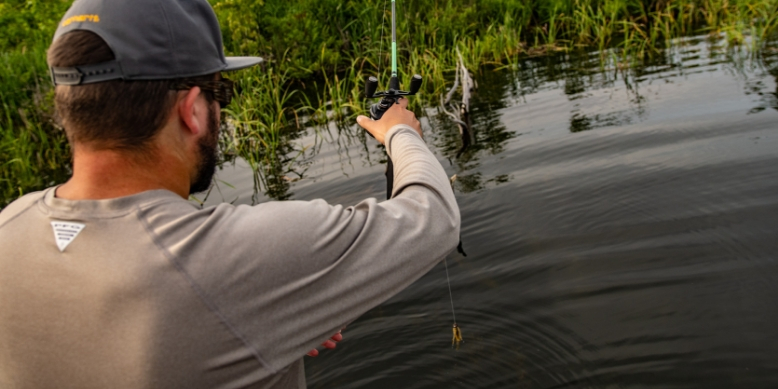
Flip your jig into tough to reach spots up where Bass are holding
Jigging Techniques for Bass
Bass jigging works best when lunkers are holding near shallow cover such as grass, rocks, laydowns, and docks. Fishing a jig in deeper water is productive in the summer and winter time or when baitfish have moved offshore. Whether bass are feeding aggressively, seeking shade in shallow cover, or are relating to bait off-shore, there is a technique how to jig for Bass in each condition. Punch your jig through dense cover to fish the shallows. Drag your jig along the bottom to fish deeper structure. Swim your jig throughout the water column to search for fish in-between depths.
Weedless Skirt Jig
A natural brown weedless jig tipped with a brown grub is one of the most popular jigging presentations. The coloring can mimic a crawfish or goby and the profile of the curl tail grub can swim through the water. This pairing is available in our Bass Fishing Kit and gives you the versatility to punch, drag or swim your jig.

Natural colors like our Brown Skirt Jig + Curl Tail Grub are the most versatile
Punching a Jig
Weeds, brush and boulders are typical cover features to shallow fishing. When presenting your jig underneath branches and docks, punch your jig through cover by ripping up 2-3 ft and letting the jig fall back down. Punching is a more aggressive form of jigging, but make sure to pause a few seconds and let your jig sit on the bottom. Punching calls in Bass; pausing lets them strike.
Dragging a Jig
Drag your jig along deeper, offshore structure for schooling fish. Cast far to search more water and reach the bottom in deeper depths. At the end of a cast, let the jig fall to the bottom and use the length of the rod to slowly drag the jig across the bottom. Maintain solid contact with the bottom. Baitfish and forage hold to the bottom, so maintaining contact is key.
Swimming a Jig
Swim your jig along the edges of weed beds and transitions between deep and shallow water. Cast your jig parallel to these transitions and work it back with a steady retrieve. Position the rod to 10 o’clock and swim your jig back with intermittent pules to give an erratic action that triggers strikes. When the jig makes contact with weeds, give the rod a solid pop to free the bait and continue the retrieve. This popping action often entices a Bass to bite.


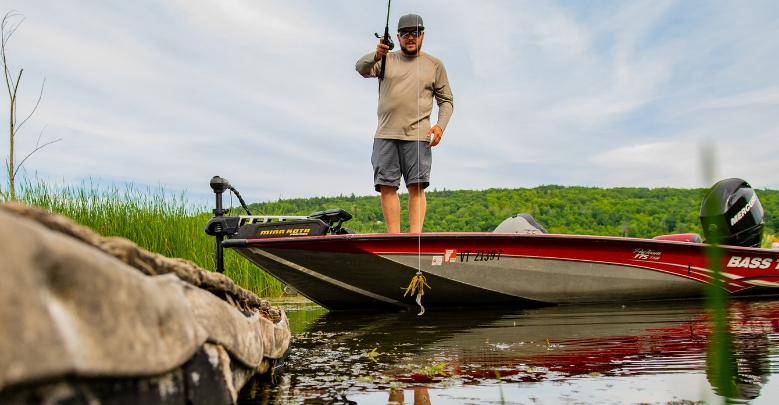


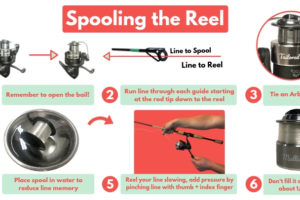
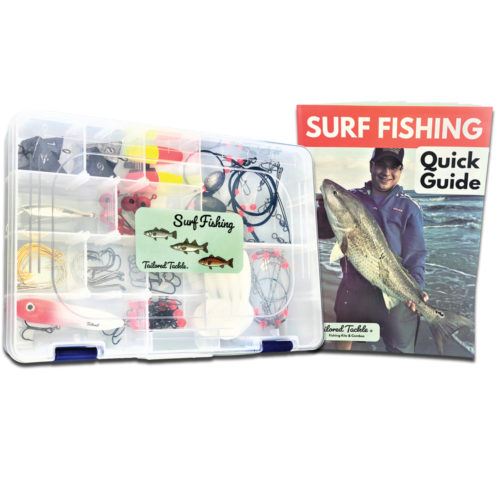
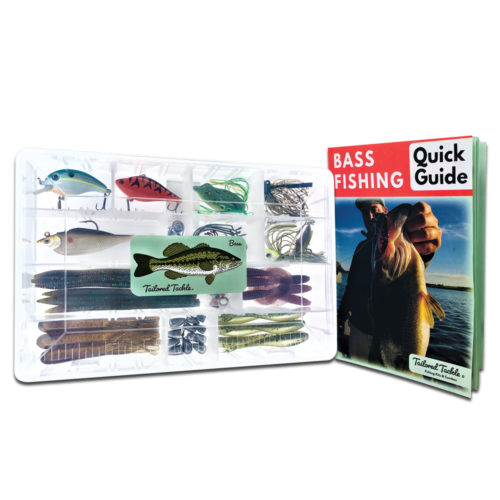



Leave a Reply